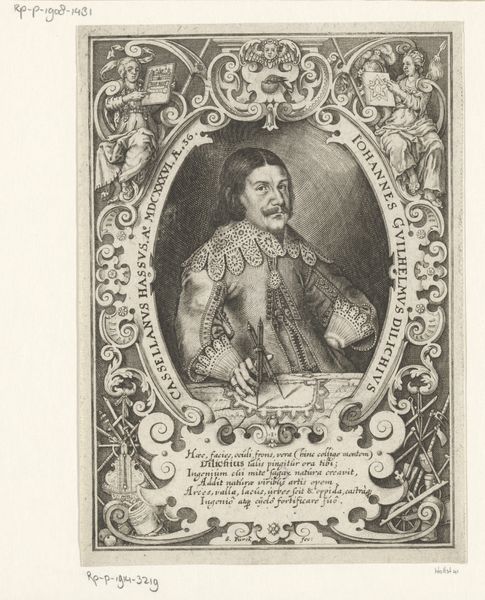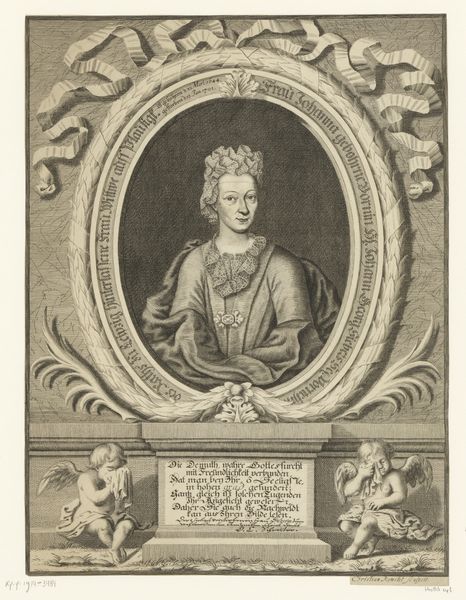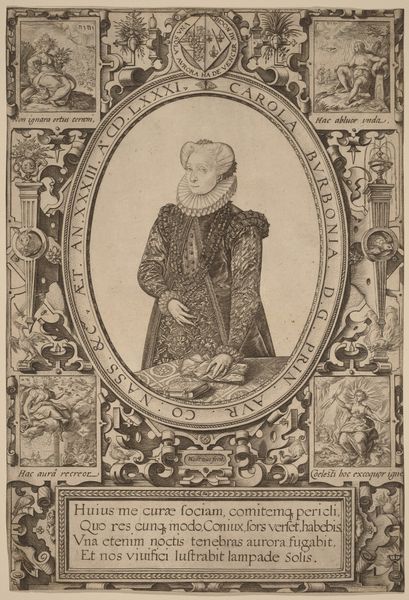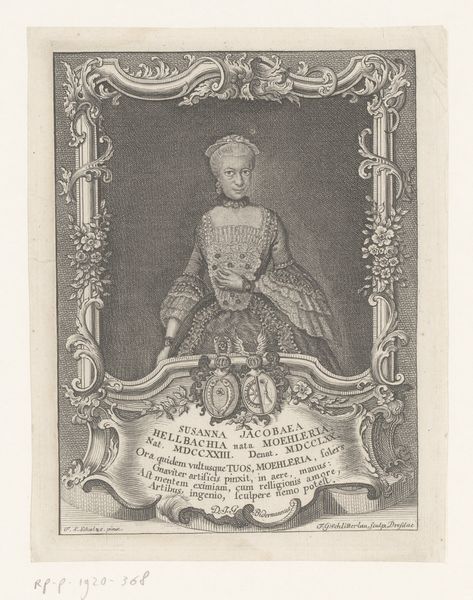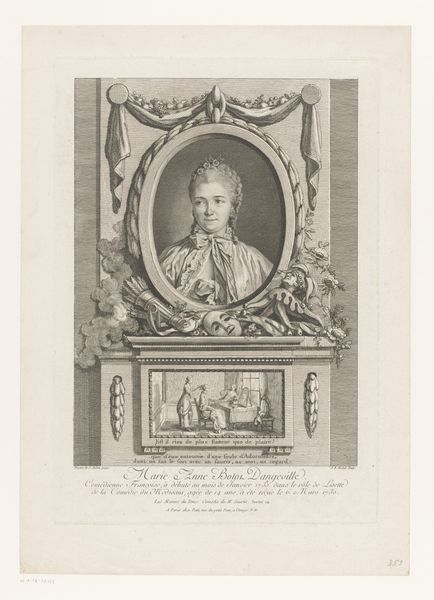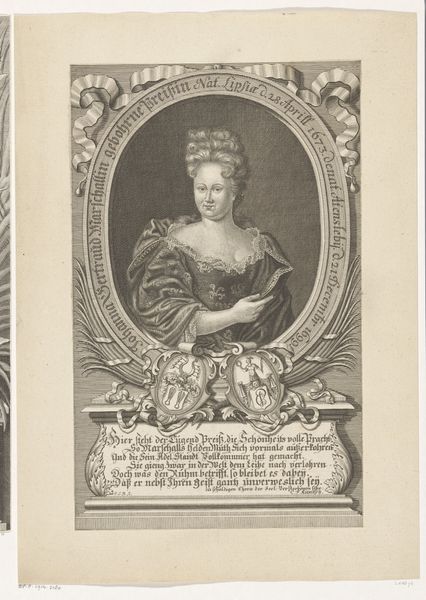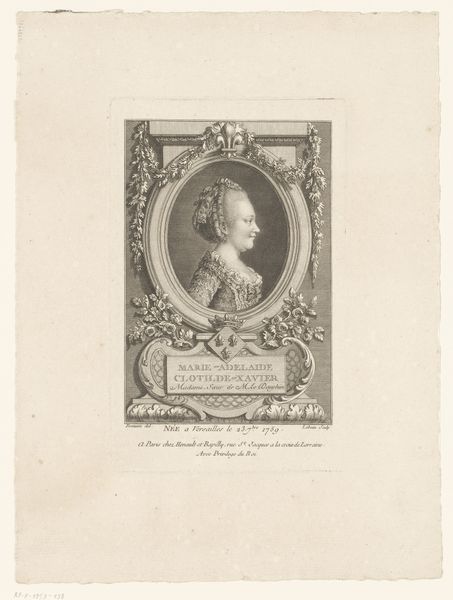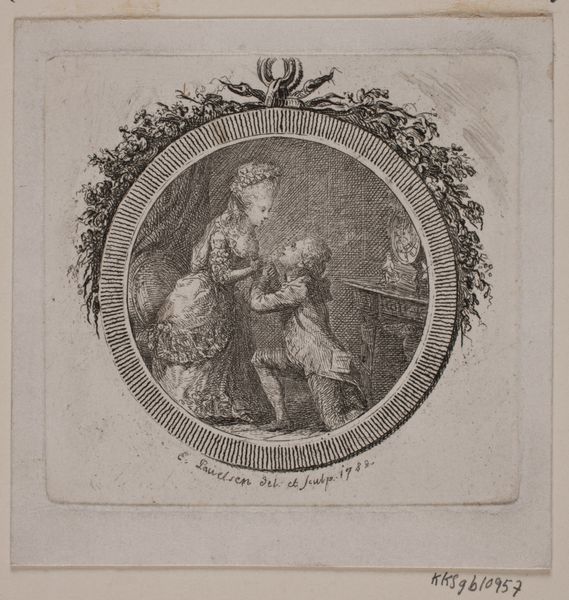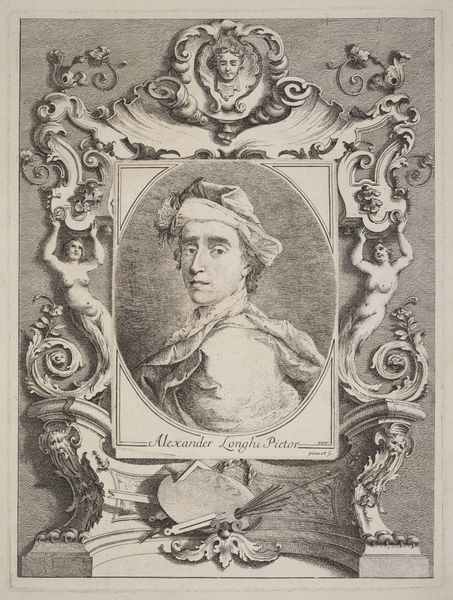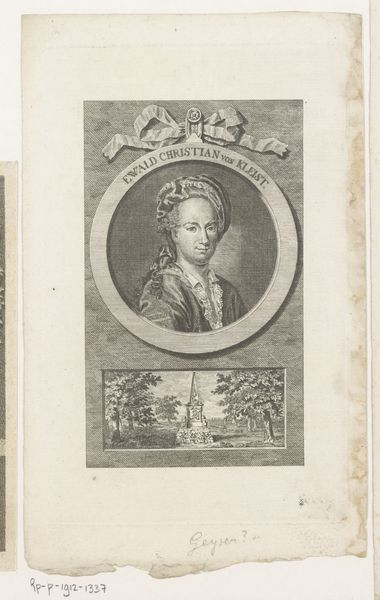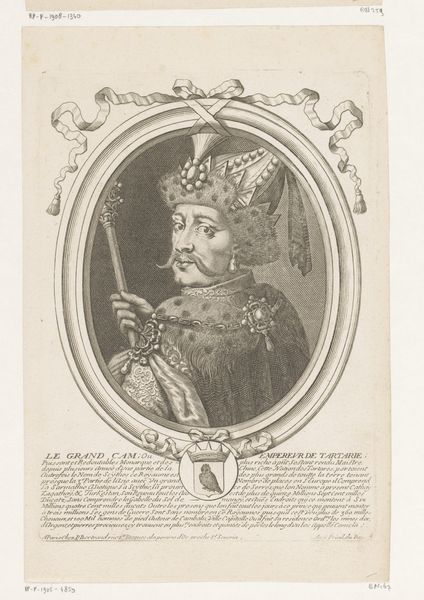
Twelves Plates from "Almanach de la toilette et de la coiffure des dames françoises" 1779
Dimensions: 6 1/4 × 4 5/16 × 3/16 in. (15.9 × 10.9 × 0.4 cm)
Copyright: Public Domain
Curator: At first glance, this engraving projects such an austere elegance; it feels intensely controlled, doesn't it? Editor: It does. There's a stiffness that almost speaks to constraint. The high ruff and elaborate attire give her a certain remove. Curator: Absolutely. We're looking at "Twelve Plates from 'Almanach de la toilette et de la coiffure des dames françaises,'" created in 1779 by the Remondini Family. It's currently held at the Metropolitan Museum of Art. The piece is made using drawing, engraving and print on paper, quite typical for the era, wouldn't you agree? Editor: Undeniably, this exemplifies the fashion prints of the late 18th century but I'm thinking more about how these images were used to transmit social norms and expectations about femininity. Curator: Indeed. This particular plate, for instance, visually documents hairstyles during the reign of Henri IV. What I find fascinating is how it reflects the escalating importance of presentation and personal grooming within the French aristocracy. Editor: The portrait sits squarely inside ideas around visual representation as performance. Court culture in this time was deeply shaped by images which became a type of cultural currency and a way to display status and political leaning. Curator: Yes! The degree to which personal adornment became intrinsically linked to the exercise of power at the time can be easily glanced from the portrait’s subject with puffed hair, ornamented dress, jewelry and rich lace— Editor: Almost theatrical, in its presentation... Considering what was transpiring socio-politically just before this piece was composed, with pre-revolution social structures strained by increasing inequality and simmering class unrest, an object like this appears like another means through which the elite distinguished themselves in sharp contrast to other classes. Curator: Which returns us, really, to your initial observation about constraint. There’s something contained not just in the composition but in the whole climate it portrays. Editor: Indeed. So, seeing past beauty alone offers critical possibilities!
Comments
No comments
Be the first to comment and join the conversation on the ultimate creative platform.
